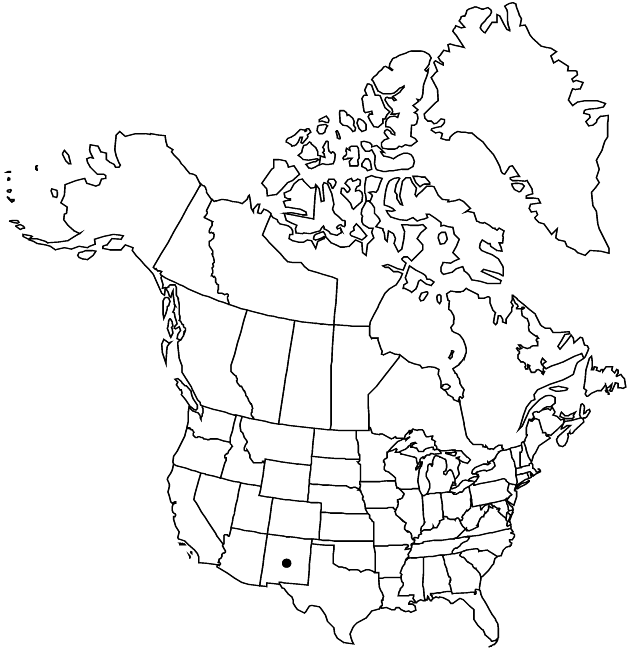Perityle cernua
SouthW. Naturalist 4: 204. 1959.
Common names: Organ Mountain rock daisy
IllustratedEndemicConservation concern
Basionym: Laphamia cernua Greene Bull. Torrey Bot. Club 25: 122, plate 333, figs. 3, 4. 1898
Plants 3–12 (–20) cm (closely appressed to rocks); glabrate or with transparent, multicellular hairs on petioles, peduncles, and phyllaries. Leaves: petioles 7–25 mm; blades ovate-reniform to ovate-cordate, 10–40 × 8–40 mm, margins unevenly serrate-dentate. Heads borne singly (nodding or erect), 10–12 × 12–14 mm. Peduncles 10–19 mm. Involucres broadly campanulate. Phyllaries 18–28, linear-lanceolate, 6–9 × 1.2–2 mm. Disc-florets 20–150; corollas yellow, tubes 1.2–2 mm, throats narrowly funnelform, 2–3.3 mm, lobes 0.7–0.8 mm. Cypselae 2.1–3 mm; pappi of 25–35 bristles 0.5–1.5 (–2) mm. 2n = 34 + 1 frag.
Phenology: Flowering spring–fall.
Habitat: Limestone or igneous cliffs and slopes
Elevation: 1600–3000 m
Discussion
Of conservation concern.
Perityle cernua is known only from the Organ Mountains of Doña Ana County.
Selected References
None.
Lower Taxa
None.
... more about "Perityle cernua"
introrse +
connate +
herbaceous +
scarious +
absent +
hirsute +
papillate +
corymbiform +
continuous +
decurrent +
ovate-reniform;ovate-cordate +
winged;ribbed;winged;ribbed +
1;15 +
stigmatic +
barbellulate +
25;35 +
unequal +
absent +
Organ Mountain rock daisy +
zygomorphic +
yellow +
callous +
monomorphic +
dimorphic +
2.1mm;3mm +
staminate +
N.Mex. +
straight +
distinct +
proximal +
1;5 +
bisexual +
dispersed +
cylindric +
equaling +
singly +
multicellular +
transparent +
singly +
indeterminate +
Present +
surrounding +
campanulate +
cauline +
deltate +
? (?) +
serrate-dentate +
calloused +
2-carpellate +
inferior +
attached +
anatropous +
persistent +
falling +
absent +
vestigial +
tough +
thick +
absent +
connate +
persistent +
distinct +
falling +
unequal +
SouthW. Naturalist +
1959 +
pistillate +
absent +
fertile +
epaleate +
pitted +
convex;flat +
fibrous +
hyaline +
callous +
exalbuminous +
modifed +
alternate +
2-branched +
papillate +
Perityle cernua +
Perityle sect. Pappothrix +
species +
equal +
shorter +
perennial +

